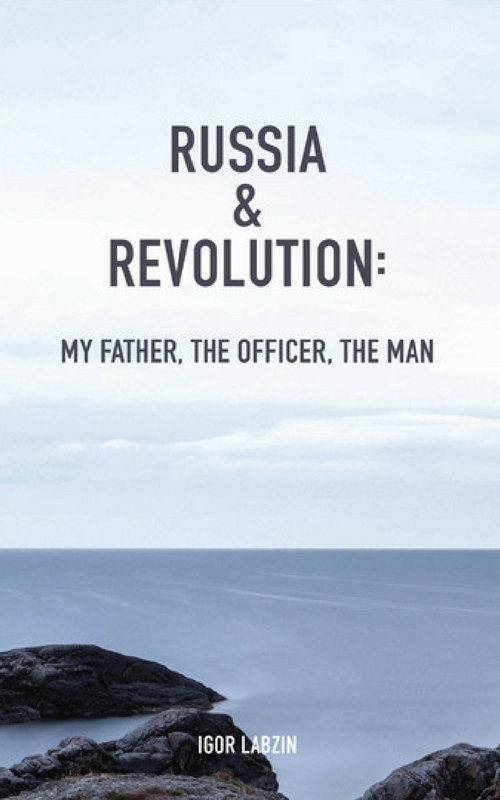
by admin | May 5, 2018 | Blog
Who were the Russian Boyars in the 10th century to the 17th century?
Princes by another name?
Russian Tsar Peter the Great, greatly influenced by his travels in Europe, daringly changed the antiquated Russian ruling systems one of them being the Boyars, changing their designations to the more Western royal titles of princes and dukes.
Now, with the approach of the 100 year anniversary of the execution of Tsar Nicholas and his family on the 17th July 1918, one tends to reflect on how such a spectacular and tragic demise of this family marked the end, not only of the 305 year old reign of the Romanov family, but in a broader sense the rule of the Boyars of Russia of whom the Romanovs were the most prominent and successful members.
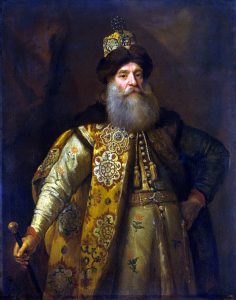
The Boyars (1682,_Hermitage)
Who were these people called The Boyars?
It all started with Rurik, a Viking prince, who established a number of principalities in what is present day Russia in 862 AD and whose lineage continued until it ended with the Tsardom of Russia and the ascension of the Romanovs in 1613.
Under the rule of the Rurikid princes, the Boyars emerged in the 11th century as the upper class of Russian medieval society with considerable political power in the first Russian Slavic state, Kievan Rus. In effect, they became the nobility and some of them became rulers of the various principalities established by Rurik and his successors.
What happened to the Boyar’s power throughout Russian history?
By the 15th century, the centre of power in Russia had moved from Kiev to the Grand Principality of Moscow (Muscovy) with the Boyars still in their position of power and effectively kingmakers.
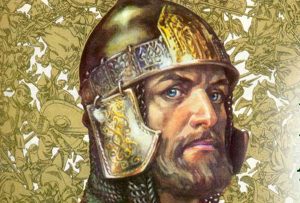 Alexander Nevsky of Russia, World History
Alexander Nevsky of Russia, World History
It was this era that produced such famous Russian historic names such as Prince Alexander Nevsky whose name lives on as the famous Nevsky Prospekt in St Petersburg, Prince Dmitry Donskoy and then of course Ivan IV (Ivan the Terrible or more correctly Ivan the Fearsome). By this time, Muscovy had expanded greatly into the Western part of Russia, as we know it now.
 Ivan IV www.biography.com
Ivan IV www.biography.com
Some of the most notable Muscovy Boyars were Boris Godunov (made into an opera), the Golitsyns and of course the Romanovs.
Second only to the Kings in power and status, what happened to the Boyars?
By 1613, the Romanovs had outmaneuvered the other Boyars in the power plays and a young, fragile and ailing teenage Mikhail of the Romanov family left his home in the country on the 13th March 1613 for Moscow. Mikhail was then crowned Michael I, Tsar of Russia. Peter the Great later abolished the Boyar system replacing it with the Western titles of Princes and Dukes.
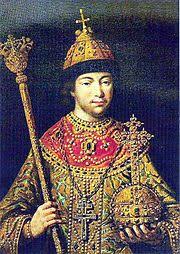 Michael I
Michael I
How disturbingly coincidental then that it was another young, ailing teenager – The Tsarevich Alexei (son of Tsar Nicholas II) that closed the chapter on the Romanov dynasty when executed by the Bolsheviks on the 17th July 1918.
The Romanov’s palace built by Mikhail’s grandfather still stands in Moscow today at No. 10, Ulitsa Varvarka, not all that far from Red Square and is even open for inspection. It is known as the Chambers of the Romanovs Boyars, a fascinating historic museum with its rooms and hallways where the Romanovs lived in the 16th century.
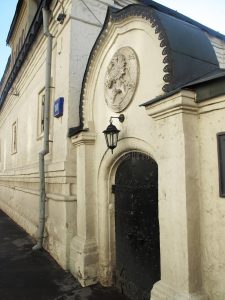
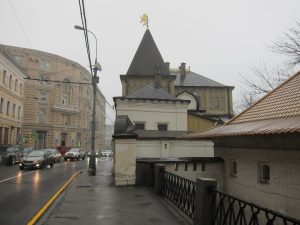
Chambers of The Romanov Boyars. Varvarka St, Moscow – Labzin Family Album
Entrance to Chambers of The Romanov Boyars. Varvarka St, Moscow at Dreamtimes.com
Reference: Simon Sebag Montefiore, 2016, The Romanovs, 1613-1918, London: Weidenfeld & Nicholson
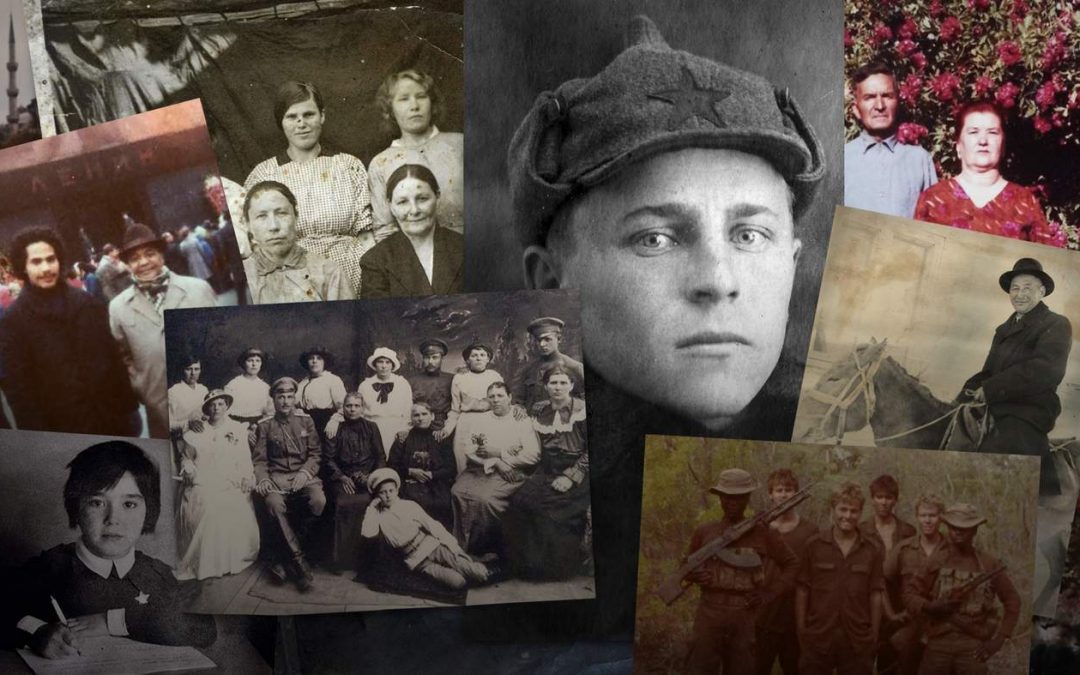
by admin | Mar 18, 2018 | Blog
White Russian émigrés in the US, in Europe in the UK! Sure, there are plenty of them. But what about in Australia, New Zealand, Venezuela, Brazil? Who are the Russian émigrés and what is their Russian ancestry?
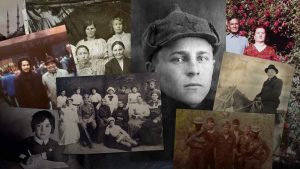
(Image: http://www.bbc.co.uk/news/resources/idt-sh/russian_revolution_and_me)
You may be surprised to know that almost in all corners of the world there are pieces of Russian émigrés’ history that seem to have been blown all over the world like confetti at a wedding. Many of their tales are lost forever but some survive.
Making Meaning: Russia’s Lost Émigrés
For example, in Australia there are Old Believers (Starovertsy) who came to Queensland in the early 1930’s and settled in a country town called Yarwun/Targinnie in Central Queensland and scratched out a living growing and selling paw paws (papaya). How do I know? Well when I was working as an engineer in Gladstone in Central Queensland in the 1970’s constructing wharves, we had a few guys working as carpenters and they spoke Russian and told me stories about the locals in Yarwun from where they came.
In itself, the history of the Old Believers is quite something. Just like in the Catholic Church who had a schism when Martin Luther proclaimed his demands for reform which subsequently led to the creation of the various Protestant churches, so also with the Russian Orthodox Church. However in the case of the latter, it was the reforms promulgated by Patriarch Nikon in the mid 1600’s that were resisted by parts of the church as being too radical (crossing yourself with three fingers instead of two etc.etc.) that led the Old Believers to split from the Orthodox Church.

(Image: Australian Census Demographic Map – dark green areas indicative of Russian communities)
On the other hand, there is the case of Vladimir Vasilivich Bodisco (1912 -1998) a Russian émigré who went to Venezuela via a long stint in Serbia, learned Spanish and applied his veterinary science training to breeding cows that could withstand the heat and humidity of the country to yield lots of milk. Even received a medal from the government for his efforts. If you would like to know more about Vladimir Vasilivich Bodisco’s story, you can read about it in my book (p. 152).
So if your grandparents or parents were Russian émigrés and there are old medals, swords, uniforms or photographs gathering dust, wipe off the dust and do some research. You may find a new window through which to look at their world.
The wonderful world of communications today is at your behest. Start with the usual online searches, and then search in Google in Cyrillic and a completely new world opens up!
From there you can contact the various government archives in Russia, email museums and libraries. One thing leads to another and soon you are going to bed late because you have been glued to the monitor reading captivating information that you had no idea existed before this.
By the way, the Russians seem to have a high regard for keeping accurate records in their archives and have a great fascination in what happened to their countrymen that were scattered to the four winds.
Some of the sites that I have encountered are:
Russians in Yarwun/ Targinnie
https://www.gladstoneobserver.com.au/news/apn-searching-for-the-forgotten/103024/
http://deniswright.blogspot.com.au/2011/05/white-russians-of-yarwun.html
Russians in Queensland
http://qldruscentre.com/russians.php
Russian cattle breeding in Venezuela
http://www.oac.cdlib.org/findaid/ark:/13030/kt9m3nc1r5/entire_text/
If you would like to know more about my useful resources used for tracking Russian ancestry go to RUSSIAN ANCESTRY SEARCH RESOURCES


by admin | Jan 4, 2017 | Blog
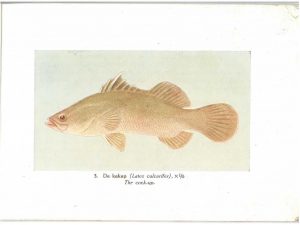
Whilst sorting old material that over the years has continued to grow slowly but steadily, I came across an aquarium booklet that was issued by the Laboratory of Marine research in Jakarta, Indonesia, in about 1955.
As many of us know, going through old things and deciding what to throw away and what to keep, is a slow, laborious and often a heart rendering experience. Sometimes it can take hours just to go through a few things, as each one of them causes the mind to relive that moment in time when that particular object was acquired and held so much significance.
So when I came across the aquarium booklet, I was transported back to 1955, when as an eight year old my father took me to see the Aquarium, which was part of the Laboratory for Marine Research in the old port of Pasar Ikan in Jakarta.
The booklet is a collection of pictures with descriptions of, what was at the time, the more common species of sea fish in Indonesia.
From its founding in 1922 until the Japanese invasion in 1941, the Aquarium with its 200,000 litre tanks and a sophisticated water filtering system was the leading edge fish research laboratory in the Dutch East Indies and arguably the world. A lot of research on the types of fish in the Indonesian archipelago was performed there and the information was used by the fishing industry.
Where is the Kakap fish now?
More than sixty years after being handed the booklet, I really take a good look through it taking me further down memory lane.
To this day still, I can relive that feeling of exhilaration that I felt when I first saw the fish in those large beautiful aquariums. I felt as fascinated looking at this underwater world as I can imagine Jacques Cousteau would have felt when he first dived overboard with a snorkel.
There is a picture of the Kakap fish (Ikan Kakap) which was “the” fish to order in a restaurant as it was considered the one with the best tasting flesh and the least number of bones, in some ways equivalent to the Australian Barramundi. Just seeing its picture conjures up memories of going to Glodok (China town in Jakarta) with my parents, grandmother, aunt and uncle, for dinner and hearing them always order the Kakap. Then shortly after, the whole grilled fish, sprinkled with chilies, chives and other succulent herbs, lying in a sweet and sour sauce on a huge platter would be served. Always tasty, always good, always a wonderful choice.
Which leads me to think of another fish that was commonly consumed in restaurants and roadside stalls, the Gourami. Unlike the Kakap fish, the Gourami fish is a fresh water fish and has more bones than the Kakap. Gourami would be on our menu only if the Kakap was unavailable.
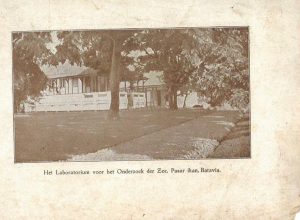
As I relive these memories, I cannot help but fast-forward my thoughts to the present. The Aquarium and the Laboratory were handed over by the Dutch to the newly formed Indonesian authorities in 1950 when Indonesia officially became independent. Soon after the Dutch scientists working there left. A few stayed on with the new Indonesian administration but then left in the 1950’s with most of them gone by 1957. What about the Aquarium and the Laboratory? What happened to it subsequent to 1957? There seems to be no information on its fate.
Where is the Kakap fish now?
As for the Kakap; I see that it is described these days as a “Snapper” rather than “The Cockup” as it was called in the English description of the fish in the Aquarium booklet. I wonder whether it is still plentiful enough to be served in restaurants. I hope so!

by admin | Sep 3, 2016 | Blog
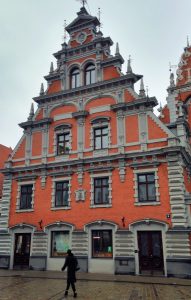
Riga, a place that until recently had been a place somewhere, not quite sure where.
And all of a sudden due to force of circumstance and a love of travel, we had just booked into an Airbnb in the main street of Riga.
1. Getting there
The journey to Riga had not been smooth sailing! We had caught a train from Tallinn to the border with Latvia and then found out that there were no connecting trains or buses, at least not for the next 15 hours to Latvia and to Riga in particular.
So we caught a taxi, for the princely sum of 100 euros from the border to Riga. The taxi driver encapsulated the dichotomy of the present day Baltic republics.
The taxi driver, a Russian, who drove us there, was entertaining as he described life from his point of view, life for Russians in the present day reality of the independent Baltic States. It all sounded a bit like the Russians were more likely to be struggling in the new reality of life in the Baltic States!
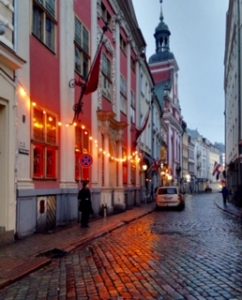
2. Staying there
The modern, recently refurbished apartment in Riga was situated on the top floor of an old six-storey apartment building with a 1930’s era lift with manually operated closing doors that could knock you out if you didn’t jump out of the way quickly enough. The apartment was great; not only was there a spa bath, but big comfy sofas to curl up on and read and take it easy.
It was then that we realised that our stay in Riga was to be not just not another stop over. It was a brush with history, and a brush with the more violent and tragic part of history at that.
Our street, Brivibas (Freedom) Street was previously Lenin Street and before that Adolf Hitler Street and before that who knows!
Two bloodthirsty dictators and a post-communist regime had left their imprimatur on the street name and many other things!
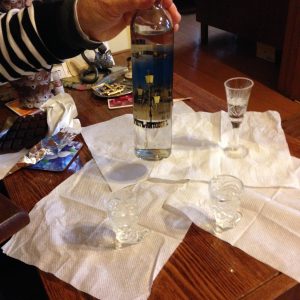
3. The characters there
In amongst all this present day Baltic anti-Russian feeling, we meet Svetlana, one of the nearly 40% of the population that is Russian still living in the Baltic States. Svetlana is more Russian than most Russians are. Svetlana an actress, hosts the Russian programme “Radio Riga”, is the chairwoman of the local Pushkin Society and the main sustaining members of the “Society for the Restoration of the Pokrovskaya Cemetry” located not far from the centre of Riga and at one time considered “the place to be buried” in the Russian Empire.
Svetlana’s life and personality is so rich that it would have seen her in one of Pushkin’s poems, had he known her. She is full of energy and drive, in touch with Russian literature and history, loves straight vodka shots, and has a keen eye for men. A true Russian woman and a connoisseur of the finer things in life.
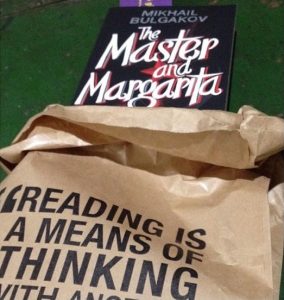
4. Away from the main square there
She takes us to visit the Cemetery along a street made famous, she says, by Mikhail Bulgakov in his book “The Master and Margarita”. Bulgakov was an author writing un-Soviet literary works in the days of Stalin, a not very promising literary career or for that matter, life expectancy for those times. Luckily for him he finished writing it just before he died, thereby cheating the firing squad.
Unexpectedly, his book saw the light of day in Western Europe in the 1960’s when Marianne Faithfull gave it to Mick Jagger. Jagger was so inspired that he wrote his very famous song “Sympathy for the devil” based upon it.
In the book, “The Master and Margarita” the locals say Margarita, the witch, at one point travels along the street leading to the cemetery, today called Meness Street, which means Moonlight Street, to meet her friends at the cemetery.
A strange feeling overcomes you when you are walking along the very same street to the very same cemetery to make your acquaintance with one of your ancestors. It is as if you are going back in time as a character in Bulgakov’s story.
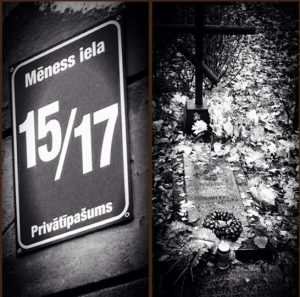
5. The fame of Meness Street there
Meness Street, for all its literary noteworthiness, is unremarkable. But its destination, the cemetery, is certainly something to behold. A home away from home to be proud of! Steeped in history and populated by famous and accomplished personages who are buried there, it would certainly be a place where one would be honoured to be laid to rest.
In a way, it is like a tidal pool on the beach that still has some water in it when the rest of the tide of history has receded. Bulgakov’s fingerprint is here too. His wife’s twin sister is buried there, as are famous Russian authors, artists and statesmen. Stories abound about its famous people: the Russian author Mintslov who insisted upon being lowered into his grave through a web of pine tree branches with his final instruction to do it as “I will be watching you”; one of the last Metropolitans of the Russian Orthodox Church, tragically killed and whose remains are buried in the ornate chapel. So the story goes, when his body was exhumed a number of years after being initially buried in a grave, to be transferred to the dedicated Chapel, none of his body parts had disintegrates. A sign of saintliness and holiness!
And so as we extricate ourselves from the time travel that the excursion to the Cemetery represents, drink vodka with Svetlana and wander off through the back streets to the huge markets adjacent to the old wharves. The exoticness is captivating and mouth-watering at the same time. Fish from the Baltic, caviar, sausages and meats that are worth sacrificing your health for, are a must.
All in all, Riga and for that matter the Baltic States of Estonia, Latvia and Lithuania are priceless gems that should definitely be on everyone’s to-do list.
Whether overlooking Tallinn in Estonia, whilst munching on their speciality of almonds roasted with sugar, cinnamon and cloves in a red-hot brazier by the side of the street or having breakfast for two for six euros in Vilnius in Lithuania, these countries are a must to visit.
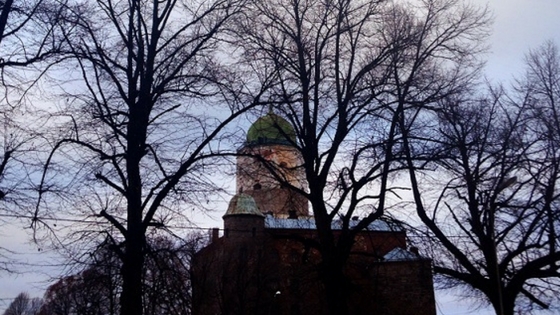
by admin | Apr 25, 2016 | Blog
On a cold, blustery late autumn day, I am on the shore of a body of water, probably part of the harbour or river, in Vyborg. A place that I had never imagined that I would ever visit until, whilst in St Petersburg, I received an invitation to come to Vyborg to do a book presentation about Sergei Mintslov.
Together with Michail Efimov, Julia Moshnik and my wife Jay, we walk toward the medieval castle that seems to be far away, when our attention is drawn in a direction that neither of us had thought of looking towards. Then we see the reason for the excitement of our hosts. It is the Clock tower that features on the cover of my translation of Faraway Days, by Sergei Mintslov, my grand uncle’s book.
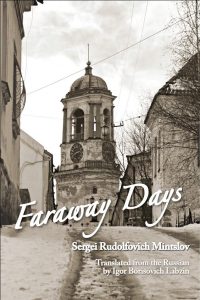
English Translation of Faraway Days by Igor Labzin
We both stop in our tracks, staring unbelievingly at the structure, which hitherto had been nothing more than a photograph on the front of my book. Vyborg was until then just a name on a map.
So why Vyborg, a city in Russia, not far from the Russian Finnish border?
This is where my grand uncle, Sergei Mintslov, who wrote Faraway Days back during the early days of the Russian Revolution, comes into the picture. You see, he wrote it in on his estate in Kamere, which these days, is an outlying suburb of Vyborg.
The couple, Michail and Julia, that have met us at the railway station and who are now escorting us, via a walk around the old part of Vyborg to the 13th century Castle that is now a museum, are a husband and wife team of local historians who have a keen interest in Sergei Mintslov.
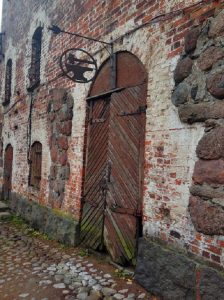
Inside the walls of Vyborg’s Medieval Castle
Vyborg Castle Museum
After a quick orientation tour of the city centre with them, we arrive at the Castle and warm up over a cup of tea with biscuits, before taking a close up look around the back corridors, rooms and staircases of the castle. It is the first ever experience for both of us to be able to see at such close quarters the inside of a castle, rather than the usual few rooms that are made available for viewing by tourists.
This castle has not yet been totally refurbished and “polished up” so as to become part of the global tourist track. Its floors and walls still show the wear and tear of the many years of service as a fortress manned by soldiers. We are then left to our own devices for a few hours before the commencement of the presentation of my book, Faraway Days, in the main hall of the castle that evening. Probably the very same room where in days of old, the Swedish and Teutonic knights would while away the night prior to setting off for a battle in the morning.
Vyborg certainly has a lot of history behind it. Founded by the Swedes in 1293 by Torkel Knutsson, whose statue still stands in the main square, it changed hands numerous times between the Swedes and the Russians and between Russia and Finland in the period of the Russian Revolution and the end of World War II.
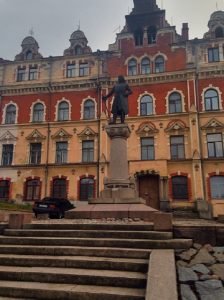
Statue of Knutsson in Vyborg
Mon Repos
We wander off to Mon Repos park, a good half hour walk from the city centre. It is considered to be one of the jewels in the crown of the city. The land was bought by Ludwig Heinrich von Nicolai in 1788 and remained in the family until 1943, when Soviet Russia retook Vyborg.
Mon Repos, on a cold autumn day is somewhat daunting but fascinating with its autumn colours, piles of chopped wood, old tumble-down timber buildings and lichen and moss covered tree trunks. It is the very epitome of not only Russia but also of northern Europe. Its large rock outcrops are a rarity in this part of the world and are much admired by the locals who flock to the park in summer.

Mon Repos rock garden
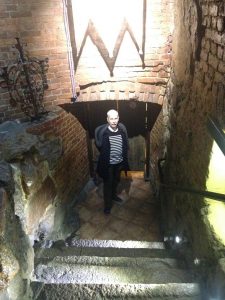
Slavjanskaja Trapeza Restaurant, Vyborg
Having had as much cold fresh air as our bodies could stand, we seek shelter in a bistro recommended by Michail and Julia, the couple that met us at the railway station. It is fantastic!
The Slavjanskaja Trapeza restaurant is located in a basement carved out of stone in the old part of town. Crouching slightly so as not to hit our heads on the low stone ceilings, and having been at first mistaken for Finnish tourists, but then feted for coming all the way from Australia, we settle into a real Russian culinary journey of fish soup, grilled salmon and of course, to keep a grip on reality, a plate of potato chips.
All this quaffed down with a bit of the local beer, and tea, but not too much, as we have to keep our wits about us for the evening presentation. It’s top notch.
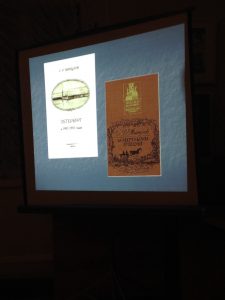
Books by Sergei Mintslov
My presentation on Sergei Mintslov starts with great promise and proceeds to get better and better as the event proceeds. The director of the museum, Vladimir Tsoy, just like all his colleagues, has no air of stuffiness about him. Au contraire, they are young, smart and energetic! An absolute delight to be in their turbo-charged atmosphere, juxtaposed with the 13th Century Castle in which they work.
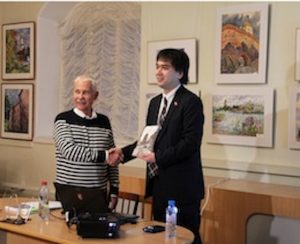
The Director of the Castle Museum
The locals have also turned out in force for the presentation, the local Vyborg Times, the Local TV station and all the Mintslov aficionados of the district, including a local scholar, Michail Kostolomov, who is a recognised scholar of all things Mintslov, including Mintslov’s eccentric, as some would have it, sister Anna.
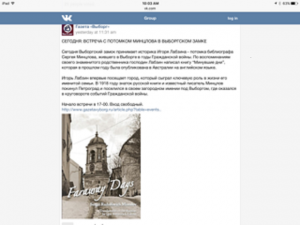
Article in the Vyborg Gazette November 2015
Following the end of the presentation and interviews with the local media, we walk the quiet streets along the river, under the streetlights, to the railway station with Michail and Julia. On the train, which travels at speeds of up to 150 km per hour, we arrive in St Petersburg an hour or so later.
Back in our hotel room just off Nevsky Prospect, we are both dazed, not only with the rapidity of the day’s events but also with the discovery of an unknown part of the world and its attendant history that was hitherto unknown to us.
A day never to forget and always to cherish!
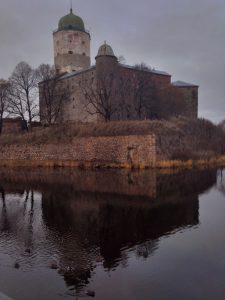
Vyborg Castle

by admin | Mar 19, 2016 | Blog
Tips On What To Do With Old Russian Memorabilia
Babushka has moved into a nursing home and you don’t know what to do with all of her beautiful old Russian memorabilia, books and mementos. They are family treasures and you don’t want to throw them out but then again it takes up room to store it and anyway you cannot read Russian so what’s next. It starts to feel like a fine line between fascination and ordeal.
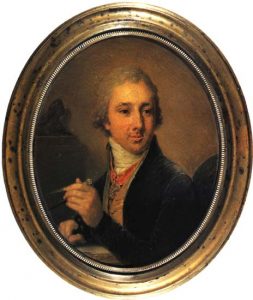
Who is interested? The Dom is. That’s The Dom Russkovo Zarubezhya (Foundation of Russians Abroad) in Moscow – interested in tokens from the 20th century especially of Russian émigrés who left Russia to make new lives in other countries.
Rummage through the boxes and here is what you may find.
Old letters and documents in Russian dating back to 1917
This piece of memorabilia lists the names of the young officers who were graduating from the St Petersburg Naval Academy, who swore their oath of allegiance to Tsar Nicholas II prior to the outbreak of the revolution.
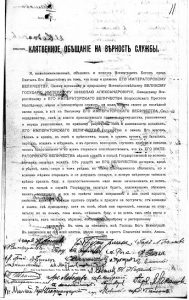
Oath of Allegiance
Dusty stained photo albums with precious photos falling out of the stick on “corners” on the black pages. If you are lucky, there in faded pencil on the back, are the names of those in the photo. Sometimes there is the year and sometimes a precious comment to reveal a snippet of a story around the pic. This one is of the White Officers on manoeuvres in Eastern Russia in 1922.
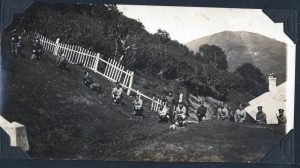
On manoeuvres on the Kamchatka Peninsula, Far East Russia, circa 1922
Valued Russian Books
Books ranging from St Petersburg Naval Academy text books to the classics of Tolstoy, Pushkin and Chekhov to cookbooks with the foreword written by Stalin. The covers may be tatty and discoloured, the pages dog-eared but they evoke the culture of the era of the silver age of Russian literature.
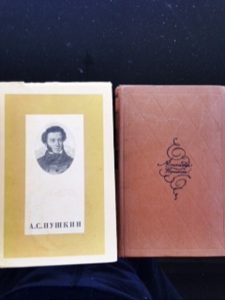
Pure Vintage Clothes
Yes the op shops would love the old suits and dresses, maybe a slightly squashed hat or two but definitely the gloves, the bowties and cigarette cases evoke memories of the glamorous 30s and 40s. There may be pieces of old military uniforms or the cap and epaulettes of the ship captain or his pipes and ashtrays all memorabilia jumbled together in the leather hat box with the stickers of voyage destinations many years ago.
Sea Trunks full of Collectibles
Open them up and dig around through some old blankets and newspapers wrapped around things. What are they? The sexton in another box of its own; stained leather binoculars; old worn tobacco tins.
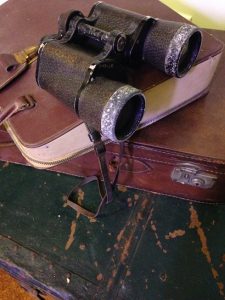
What’s next?
What does the Dom do with these pieces of Russian memorabilia and why are they interested?
Their work is concentrated on the preservation of Russian culture and history of Russian émigrés through research and documentation, presentations and displays of aspects of life prior to and after the Russian Revolution and tracking the stories of White Russians who fled from Russia in the 20th century. What happened to these people? What are their stories? That is why your babushka’s keepsakes may be of great interest to them.
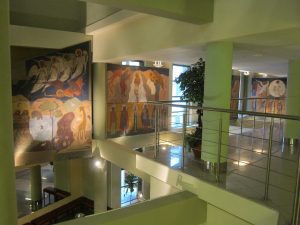
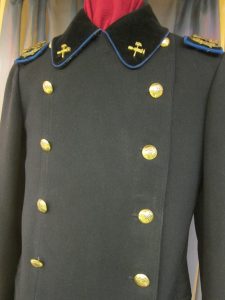
You can visit the library and gallery at the Dom, view special displays and their art gallery.
Contacting the Dom is easy – go to http://www.domrz.ru
Contact them at info@bfrz.ru – tell them what you have, are they interested?
Interested in the real story around these photos and the Russian Memorabilia – it’s all in my book Russia and Revolution: My Father, The Officer, The Man


 Alexander Nevsky of Russia, World History
Alexander Nevsky of Russia, World History Ivan IV www.biography.com
Ivan IV www.biography.com Michael I
Michael I

































